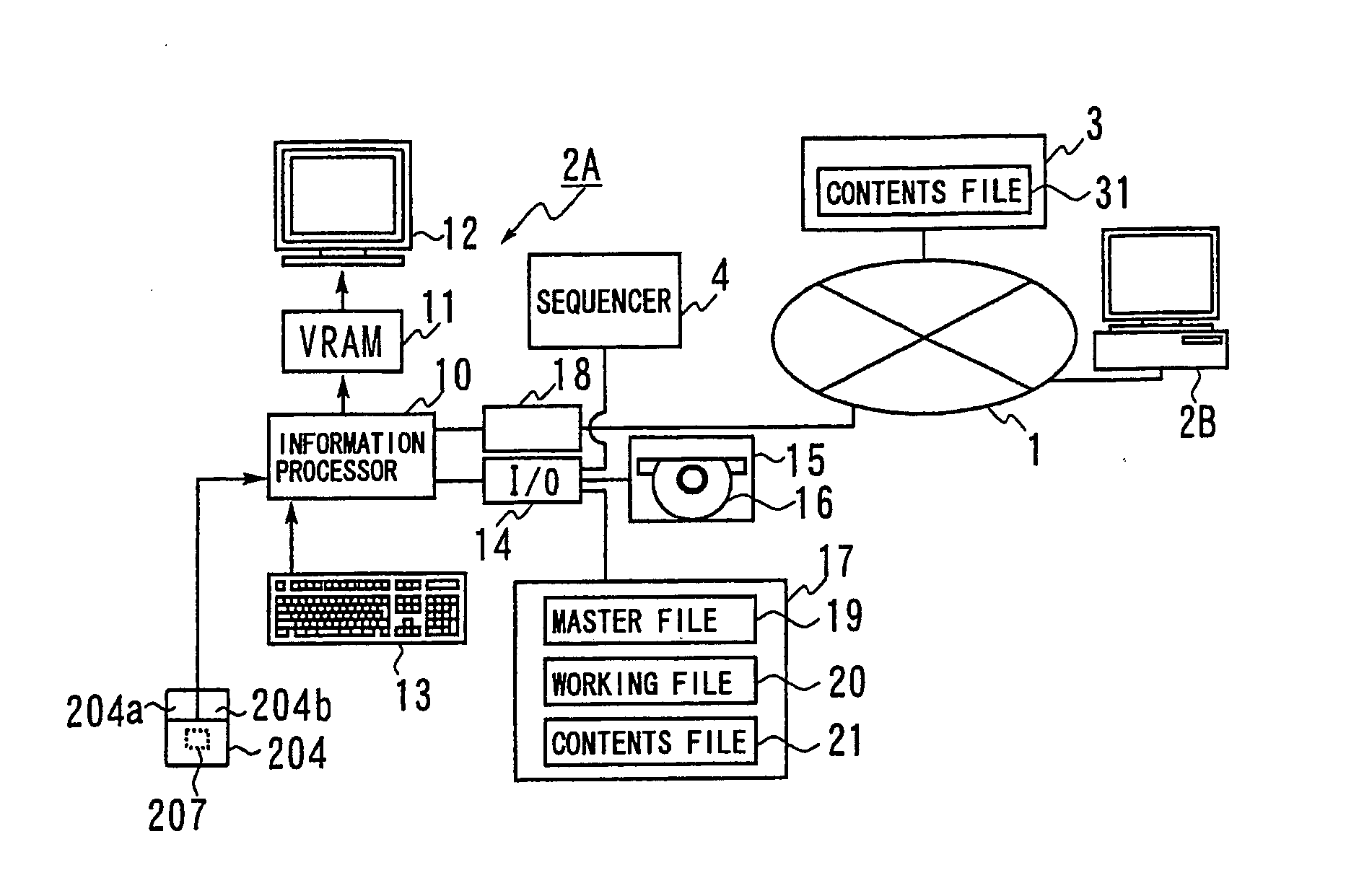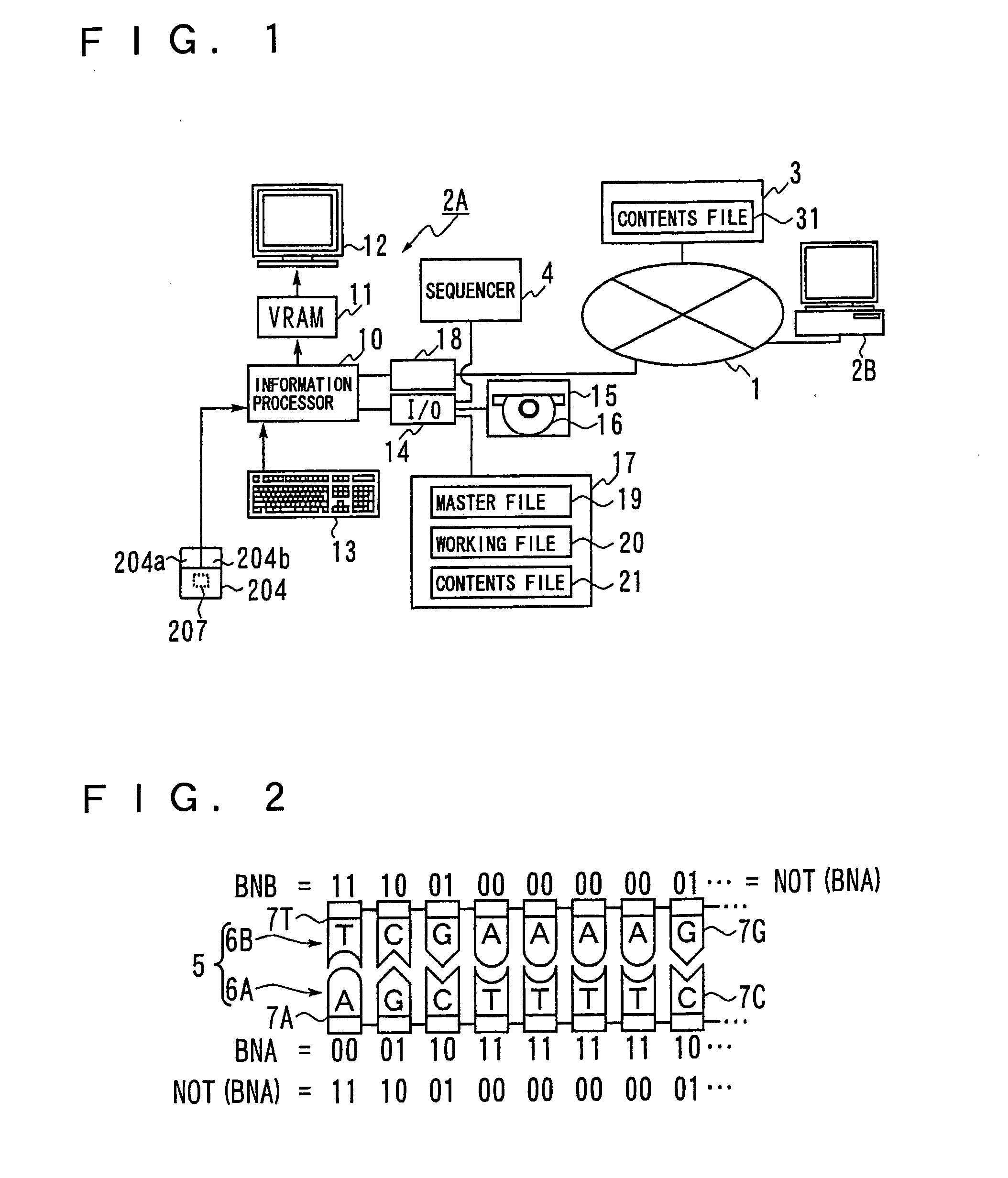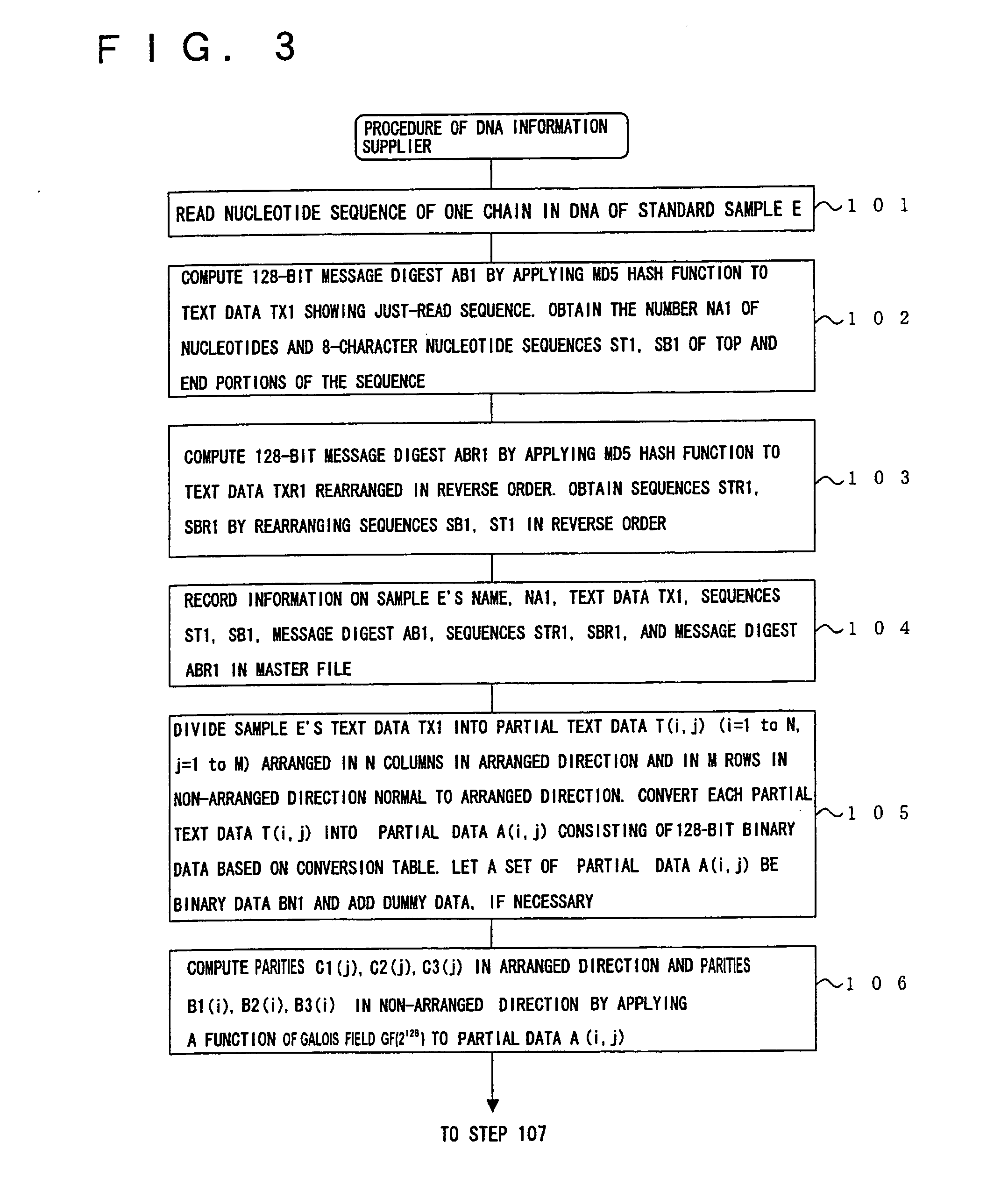Method and device for recording sequence information on biological compounds
- Summary
- Abstract
- Description
- Claims
- Application Information
AI Technical Summary
Benefits of technology
Problems solved by technology
Method used
Image
Examples
Embodiment Construction
[0126] A preferred embodiment of the present invention will now be described with reference to the accompanying drawings. In this embodiment of the invention, some pieces of information on sequences of nucleotides (biological compounds) in DNA (deoxyribonucleic acid) are processed with computer systems.
[0127] Referring to FIG. 1, which illustrates a computer system 2A of the embodiment, the computer system 2A has on its center an information processor 10 which consists of a CPU (central processing unit), memories such as RAM, ROM, etc., and storage devices including hard disk drives and the like. A display unit 12 consisting of a CRT display is connected to the information processor 10 via a video RAM (VRAM) 11, and a CD-R / RW drive 15 which can record data on a CD-Recordable disk (hereinafter referred to as “CD-R”) 16 and read data in a CD-R and CD-ROM is connected to the information processor 10 via an I / O unit (input-output unit) 14. As a mass storage device a magnetic disk unit ...
PUM
 Login to View More
Login to View More Abstract
Description
Claims
Application Information
 Login to View More
Login to View More - R&D
- Intellectual Property
- Life Sciences
- Materials
- Tech Scout
- Unparalleled Data Quality
- Higher Quality Content
- 60% Fewer Hallucinations
Browse by: Latest US Patents, China's latest patents, Technical Efficacy Thesaurus, Application Domain, Technology Topic, Popular Technical Reports.
© 2025 PatSnap. All rights reserved.Legal|Privacy policy|Modern Slavery Act Transparency Statement|Sitemap|About US| Contact US: help@patsnap.com



